Mikroelektronika d.o.o.
Herzfrequenz 11 Click Board
Herzfrequenz 11 Click Board
Verfügbarkeit für Abholungen konnte nicht geladen werden
Key Features
- SpO2-Messung hinter IR-durchlässiger, aber sichtbar dunkler Tinte, hohe Beleuchtungsstärkengenauigkeit bei verschiedenen Lichtquellen, hohe Empfindlichkeit und Auflösung, geringer Stromverbrauch, Objektbewegungserkennung und mehr
- Basierend auf dem OB1203 - vollständig integriertes All-in-One-Biosensormodul von Renesas zur Messung von Herzfrequenz und Blutsauerstoffgehalt
- Dieses Click Board™ kann die menschliche Herzfrequenz (HR), Sauerstoffsättigung (SpO2), Atemfrequenz und Herzfrequenzvariabilität (ein Maß für Stress) bestimmen.
- I2C-Schnittstelle
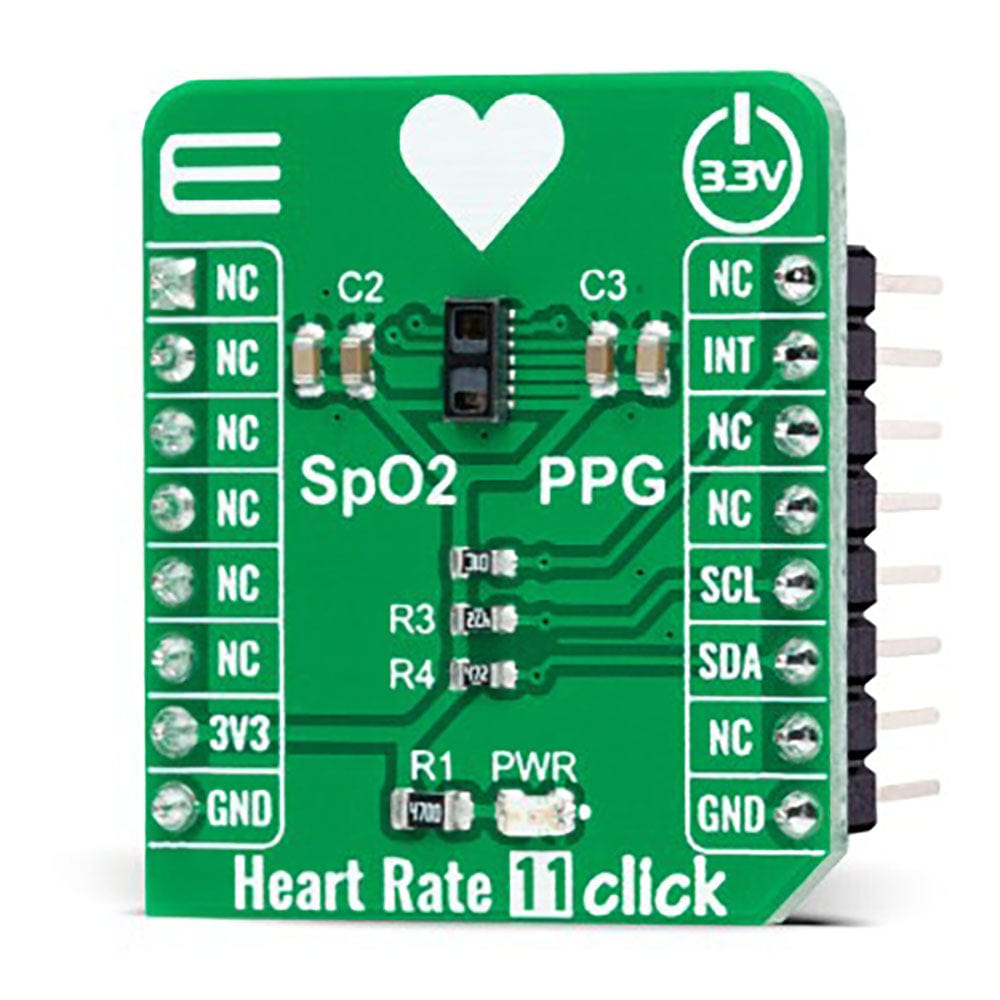
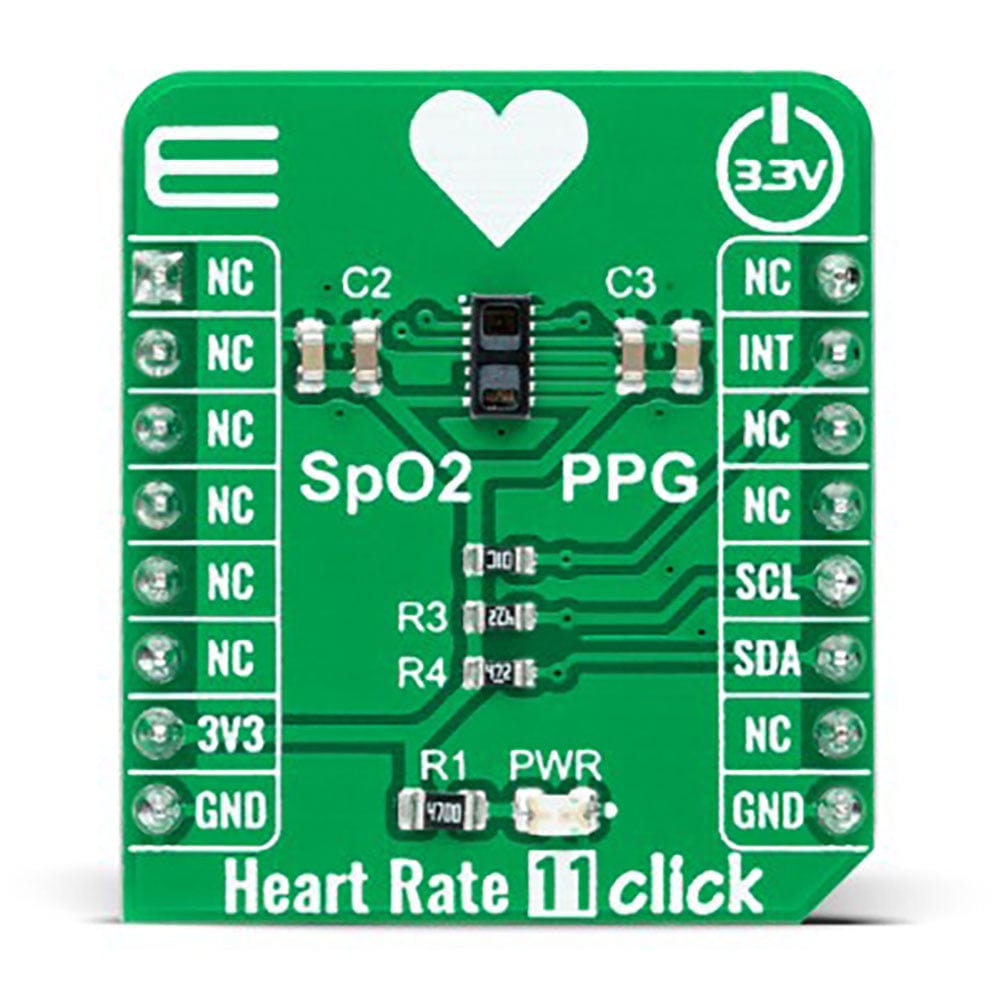
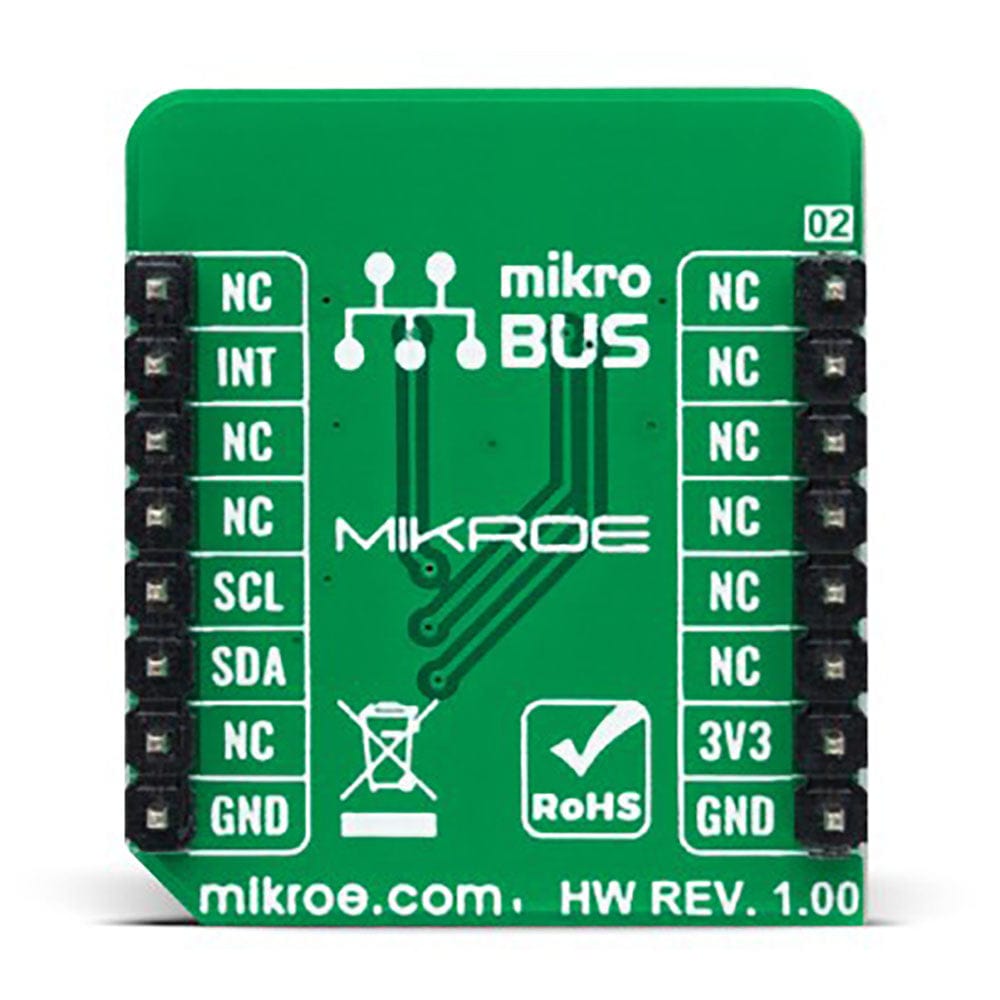
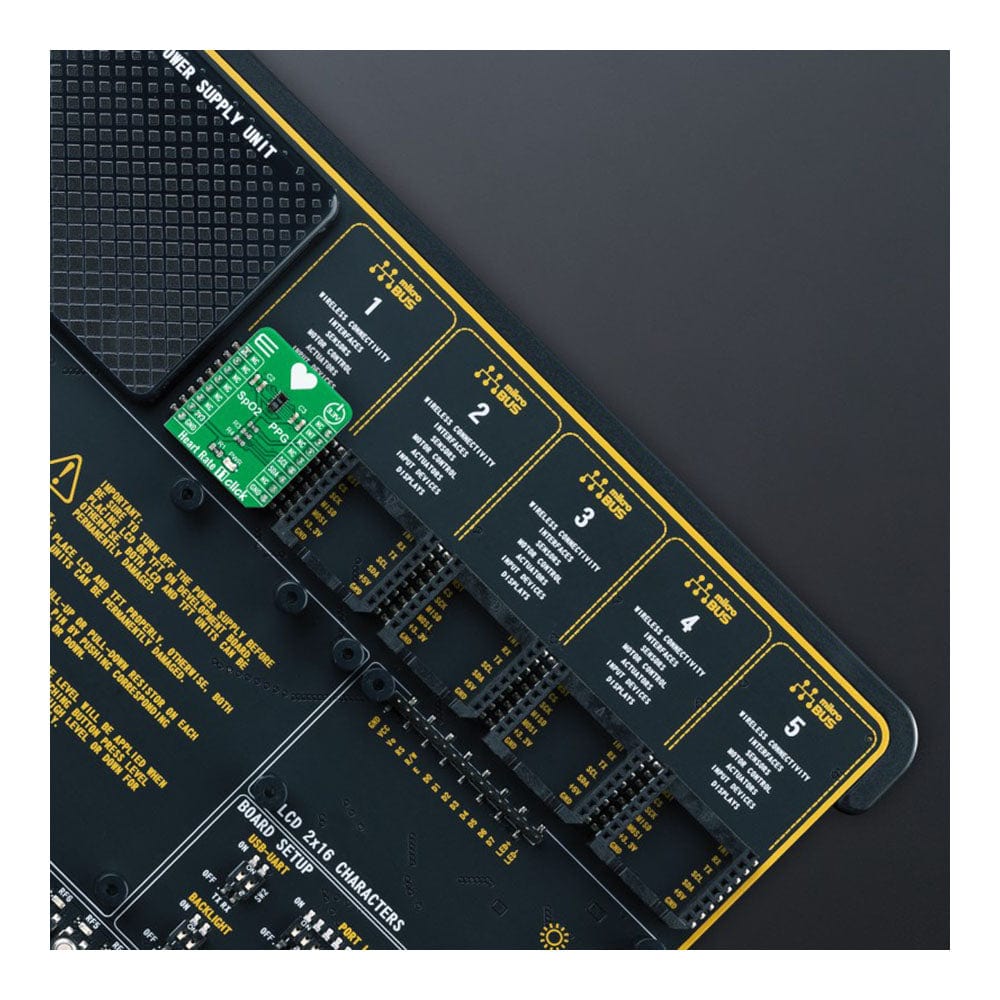
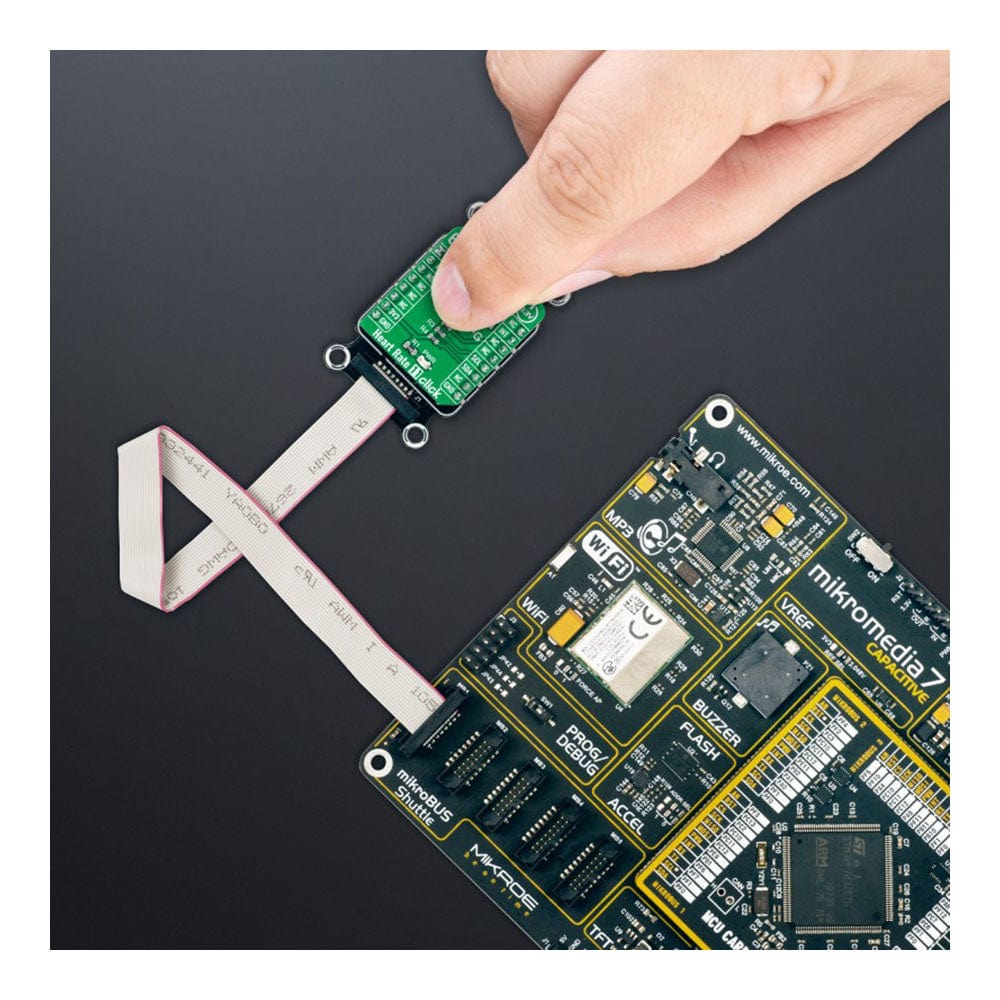
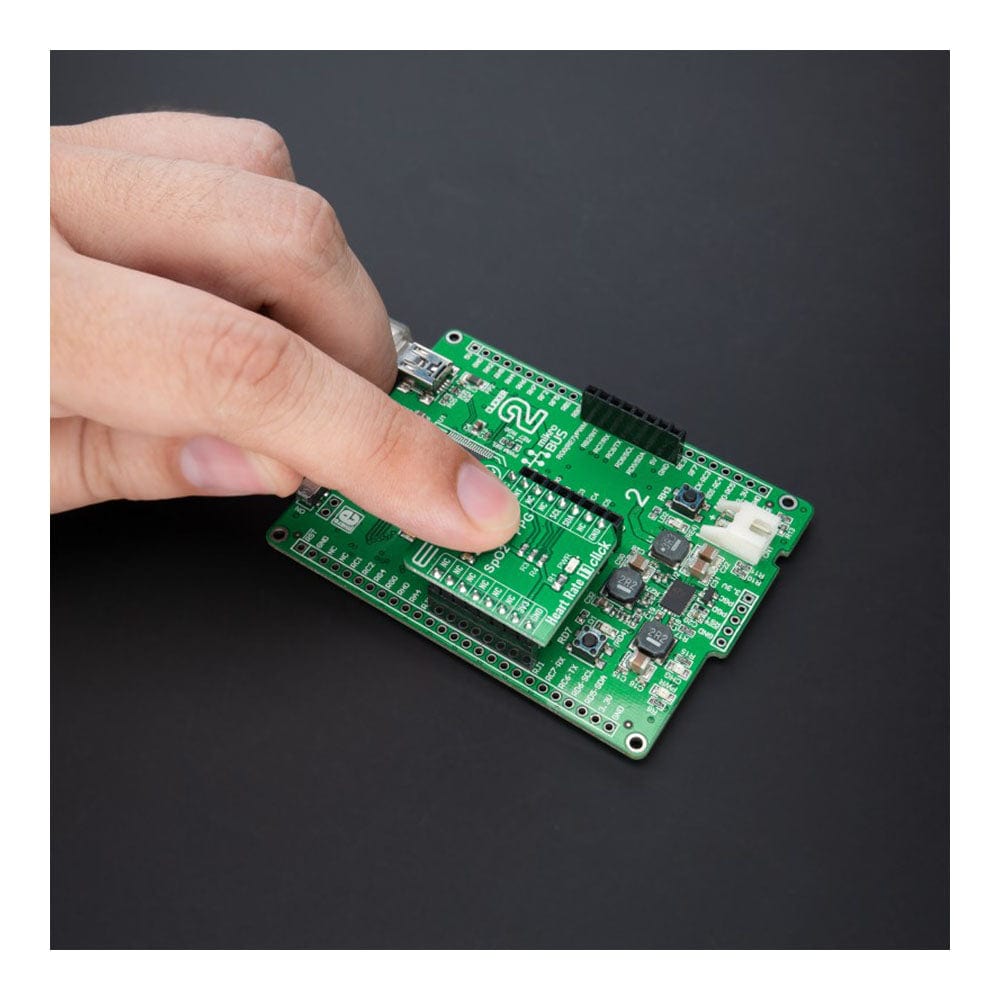
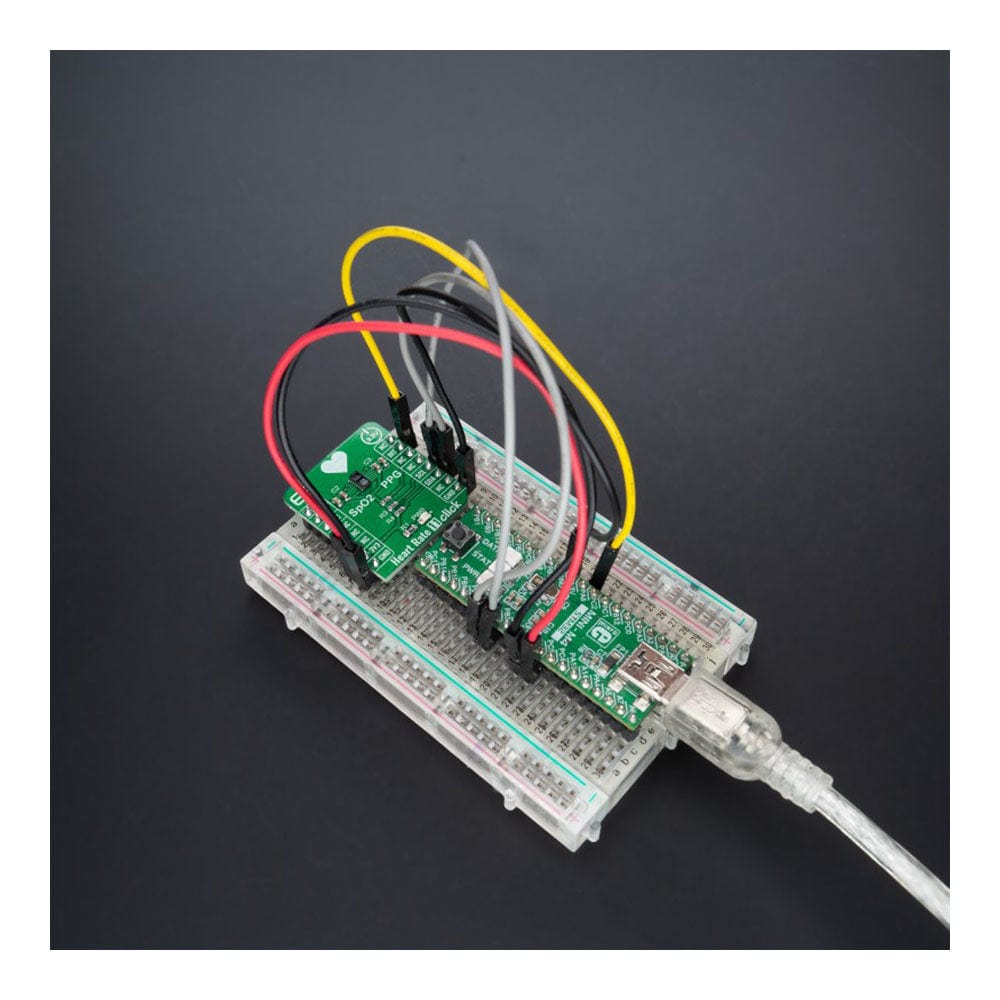
Overview
Wir präsentieren das Heart Rate 11 Click Board™
Wenn Sie nach einer kompakten Zusatzplatine suchen, die sich perfekt für Anwendungen zur Herzfrequenzüberwachung eignet, dann ist das Heart Rate 11 Click Board™ genau das Richtige für Sie. Mit dem OB1203 von Renesas, einem Mehrkanal-Lichtsensor (LS/CS), einem Näherungssensor (PS) und einem Photoplethysmographiesensor (PPG) ist diese Platine die ideale Lösung für Ihre Überwachungsanforderungen.
Erweiterte Sensorfunktionen
Der OB1203 auf dem Heart Rate 11 Click Board™ kann als Umgebungslichtsensor fungieren, ähnlich wie das menschliche Auge. Er kann auch als RGB-Farbsensor konfiguriert werden, was noch präzisere Messungen ermöglicht. Der OB1203 kommuniziert vollständig über eine standardmäßige I2C-kompatible Schnittstelle und verfügt über einen vollständig integrierten Biosensor für die reflektierende Photoplethysmographie. Mit dem entsprechenden Algorithmus kann dieses Click Board™ die menschliche Herzfrequenz (HR), Sauerstoffsättigung (SpO2), Atemfrequenz und Herzfrequenzvariabilität (ein Maß für Stress) bestimmen.
Einfach zu verwenden und zu entwickeln
Das Heart Rate 11 Click Board™ wird von einer mikroSDK-kompatiblen Bibliothek unterstützt, die Funktionen enthält, die die Softwareentwicklung vereinfachen. Das bedeutet, dass Sie schnell und einfach loslegen können, ohne sich um komplizierte Softwareentwicklung kümmern zu müssen. Da das Click Board™ ein vollständig getestetes Produkt ist, kann es auf jedem System verwendet werden, das mit der mikroBUS™-Buchse ausgestattet ist.
Holen Sie sich noch heute Ihr Heart Rate 11 Click Board™
Geben Sie sich bei der Herzfrequenzüberwachung nicht mit weniger als dem Besten zufrieden. Holen Sie sich noch heute Ihr Heart Rate 11 Click Board™ und beginnen Sie selbstbewusst mit der Überwachung!
How Does The Heart Rate 11 Click Board™ Work?
The Heart Rate 11 Click Board™ as its foundation uses the OB1203, a fully integrated all-in-one biosensor module that measures heart rate and blood oxygen levels from Renesas. The OB1203 combines all light sources, drivers, and sensor elements, in a single optically optimized package and can be used with just one side of a user's finger because it uses the space-conserving reflective PPG method. The appropriate algorithm can determine human heart rate, respiration rate, and heart rate variability (a measure of stress) or blood oxygen saturation (SpO2) behind IR transmissive but visibly dark ink, allowing implementation in aesthetic industrial designs.
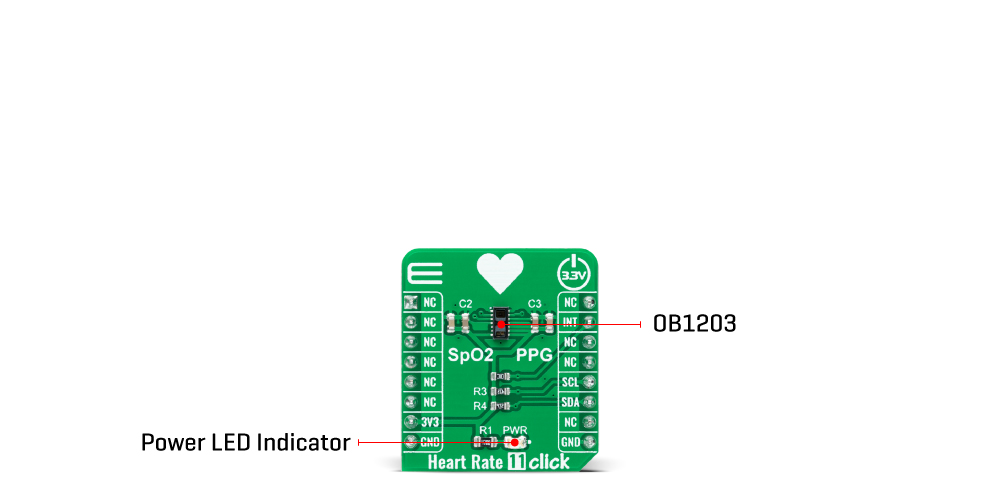
The biosensor module contains different photodiodes for light (R, G, B, and Clear channels), proximity measurements, photoplethysmography, and temperature compensation of the light sensor. Those diodes are arranged in a matrix array, while the single diode for PS/PPG measurement is located below the matrix. The current photodiode is then converted to digital values by an analog-to-digital converter (ADC) and then forwarded via a serial interface for further processing.
The OB1203 communicates with MCU using the standard I2C 2-Wire interface with a maximum clock frequency of 400kHz, fully adjustable through software registers. Also, it uses an interrupt pin, the INT pin of the mikroBUS™ socket, indicating when a specific interrupt event occurs, such as light, proximity, or photoplethysmography threshold crossed.
The Heart Rate 11 Click Board™ can be operated only with a 3.3V logic voltage level. The board must perform appropriate logic voltage level conversion before using MCUs with different logic levels. However, the Click board™ comes equipped with a library containing functions and an example code that can be used, as a reference, for further development.
SPECIFICATIONS
| Type | Biometrics,Heart Rate |
| Applications | The Heart Rate 11 Click Board™ can determine human heart rate (HR), oxygen saturation (SpO2), respiration rate, and heart rate variability (a measure of stress) |
| On-board modules | OB1203 - fully integrated all-in-one biosensor module that measures heart rate and blood oxygen levels from Renesas |
| Key Features | SpO2 measurement behind IR transmissive but visibly dark ink, high illuminance accuracy across various light sources, high sensitivity and resolution, low power consumption, object movement detection, and more |
| Interface | I2C |
| Compatibility | mikroBUS |
| Click board size | S (28.6 x 25.4 mm) |
| Input Voltage | 3.3V |
PINOUT DIAGRAM
This table shows how the pinout of the Heart Rate 11 Click Board™ corresponds to the pinout on the mikroBUS™ socket (the latter shown in the two middle columns).
| Notes | Pin |  |
Pin | Notes | |||
|---|---|---|---|---|---|---|---|
| NC | 1 | AN | PWM | 16 | NC | ||
| NC | 2 | RST | INT | 15 | INT | Interrupt | |
| NC | 3 | CS | RX | 14 | NC | ||
| NC | 4 | SCK | TX | 13 | NC | ||
| NC | 5 | MISO | SCL | 12 | SCL | I2C Clock | |
| NC | 6 | MOSI | SDA | 11 | SDA | I2C Data | |
| Power Supply | 3.3V | 7 | 3.3V | 5V | 10 | NC | |
| Ground | GND | 8 | GND | GND | 9 | GND | Ground |
ONBOARD SETTINGS AND INDICATORS
| Label | Name | Default | Description |
|---|---|---|---|
| LD1 | PWR | - | Power LED Indicator |
HEART RATE 11 CLICK ELECTRICAL SPECIFICATIONS
| Description | Min | Typ | Max | Unit |
|---|---|---|---|---|
| Supply Voltage | - | 3.3 | - | V |
| PSpectral Response (R/G/B/C) | 610/550/470/520 | nm | ||
| PPG Resolution | 16 | - | 18 | bits |
| AL Sensitivity | 0.06 | - | 150.000 | lux |
| AL&CS Resolution | 13 | - | 20 | bits |
| Operating Temperature Range | -40 | +25 | +85 | °C |
We provide a library for the Heart Rate 11 Click Board™ as well as a demo application (example), developed using MikroElektronika compilers. The demo can run on all the main MikroElektronika development boards.
The package can be downloaded/installed directly from NECTO Studio The package Manager (recommended), downloaded from our LibStock™ or found on MikroE Github account.
Library Description
This library contains API for the Heart Rate 11 Click Board™ driver.
Key functions
-
heartrate11_get_int_pinThis function returns the INT pin logic state. -
heartrate11_set_led_currentThis function sets the maximal current of the selected LED. -
heartrate11_read_fifoThis function reads a 24-bit data from the FIFO.
Example Description
This example demonstrates the use of the Heart Rate 11 Click Board™ by reading and displaying the PPG1 (HR) values which can be visualized on the SerialPlot application.
void application_task ( void )
{
// Wait for the data ready interrupt indication
while ( heartrate11_get_int_pin ( &heartrate11 ) );
uint32_t ppg;
if ( HEARTRATE11_OK == heartrate11_read_fifo ( &heartrate11, &ppg ) )
{
log_printf ( &logger, "%lurn", ppg );
}
}
The full application code, and ready to use projects can be installed directly from NECTO Studio The package Manager (recommended), downloaded from our LibStock™ or found on MikroE Github account.
Other MikroE Libraries used in the example:
- MikroSDK.Board
- MikroSDK.Log
- Click.HeartRate11
Additional Notes and Information
Depending on the development board you are using, you may need a USB UART Click Board™, USB UART 2 Click or RS232 Click to connect to your PC, for development systems with no UART to USB interface available on the board. UART terminal is available in all MikroElektronika compilers.
MIKROSDK
The Heart Rate 11 Click Board™ is supported with mikroSDK - MikroElektronika Software Development Kit. To ensure proper operation of mikroSDK compliant Click board™ demo applications, mikroSDK should be downloaded from the LibStock and installed for the compiler you are using.
Frequently Asked Questions
Have a Question?
Be the first to ask a question about this.







